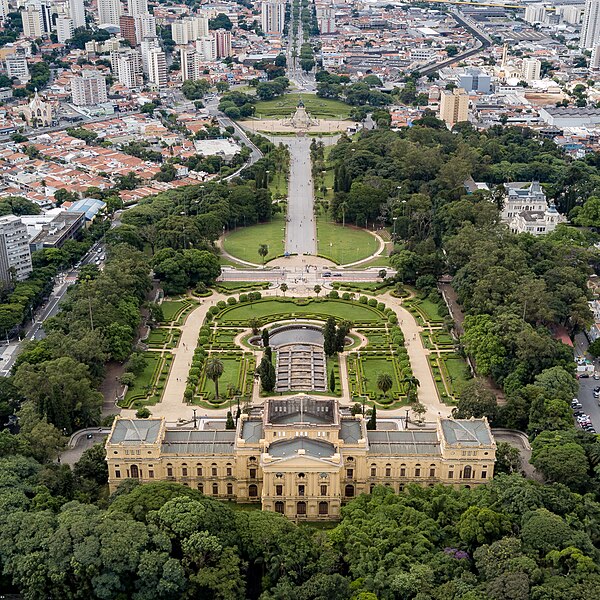São Paulo dos Campos de Piratininga
São Paulo dos Campos de Piratininga was the village that developed as São Paulo, Brazil in the region known as Campos de Piratininga. It was founded as a religious mission and a Jesuit Royal College by priests José de Anchieta and Manuel da Nóbrega on January 25, 1554. The village was initially populated by Portuguese colonists and two tribes of the Guaianás Amerindians. Later, São Paulo was the base of the Bandeirantes who explored the interior in search of slaves and gold.
Pátio do Colégio: former Jesuit church and college in the centre of São Paulo. It is a landmark of the foundation of the city.
São Paulo is the most populous city in Brazil and the capital of the state of São Paulo. Listed by the GaWC as an alpha global city, São Paulo is the most populous city outside of Asia and the world's 20th-largest city proper by population. Additionally, São Paulo is the largest Portuguese-speaking city in the world. It exerts strong international influences in commerce, finance, arts, and entertainment. The city's name honors the Apostle, Saint Paul of Tarsus. The city's metropolitan area, the Greater São Paulo, ranks as the most populous in Brazil and the 12th-most-populous on Earth. The process of conurbation between the metropolitan areas around the Greater São Paulo created the São Paulo Macrometropolis, a megalopolis with more than 30 million inhabitants, one of the most populous urban agglomerations in the world.
Image: Bairro dos jardins em são paulo (1) (cropped)
Image: Catedral Metropolitana de Sao Paulo 3 Brasil
Image: Mausoléu ao soldado constitucionalista de 1932 04
Image: Webysther 20190304150658 Parque da Independência





